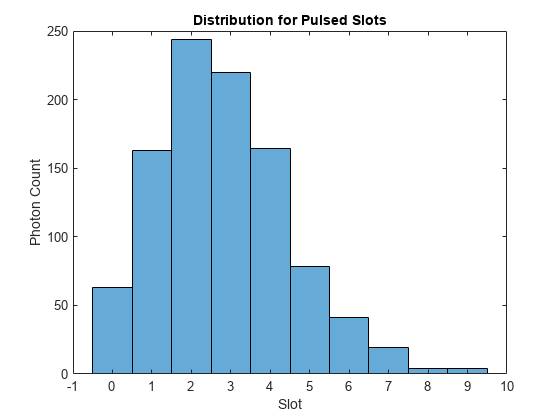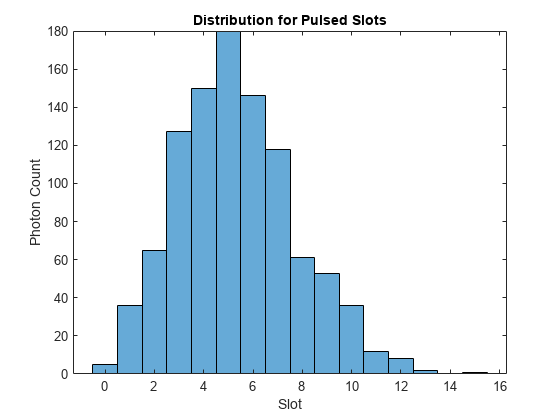dsocPoissonChannel
Description
The dsocPoissonChannel
System object™ adds Poisson distributed noise to a signal through a deep space optical
communications (DSOC) Poisson channel. The object uses the Poisson channel implementation
described in section IV of the Interplanetary Network Progress report [1].
To add Poisson distributed noise to the input signal through a DSOC Poisson channel:
Create the
dsocPoissonChannelobject and set its properties.Call the object with arguments, as if it were a function.
To learn more about how System objects work, see What Are System Objects?
Creation
Description
chan = dsocPoissonChannel
chan = dsocPoissonChannel(Name=Value)dsocPoissonChannel(NumSignalPhotons=6) sets the average number of
signal photons per pulsed slot to 6.
Properties
Usage
Syntax
Description
Input Arguments
Output Arguments
Object Functions
To use an object function, specify the
System object as the first input argument. For
example, to release system resources of a System object named obj, use
this syntax:
release(obj)
Examples
References
[1] Moision, B., and J. Hamkins. "Coded Modulation for the Deep-Space Optical Channel: Serially Concatenated Pulse-Position Modulation." The Interplanetary Network Progress Report, vol. 42-161 (May 15, 2005): 1–25. https://ipnpr.jpl.nasa.gov/progress_report/42-161/161T.pdf.
[2] Quirk, Kevin J., Jonathan W. Gin, and Meera Srinivasan. "Optical PPM Synchronization for Photon Counting Receivers." In 2008 IEEE Military Communications Conference (MILCOM 2008), 1–7. San Diego, CA: IEEE, 2008. https://doi.org/10.1109/MILCOM.2008.4753054.
Extended Capabilities
Version History
Introduced in R2023a

